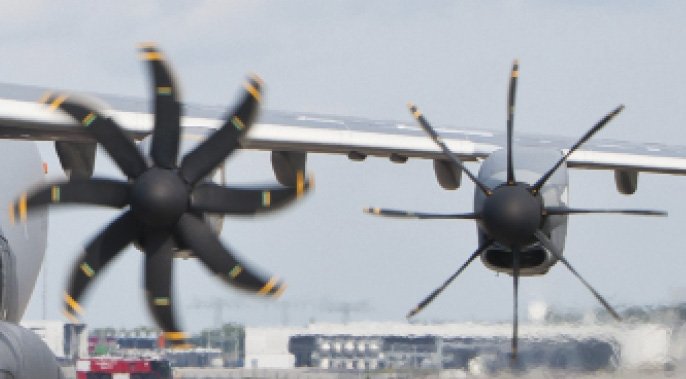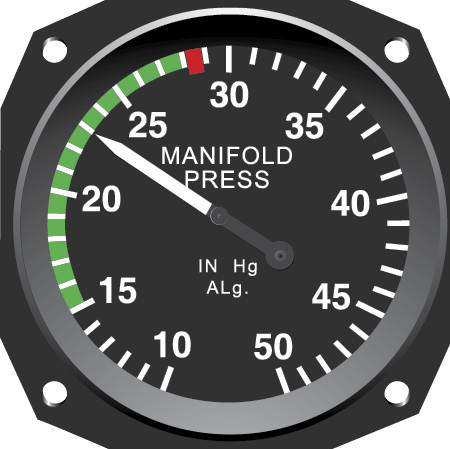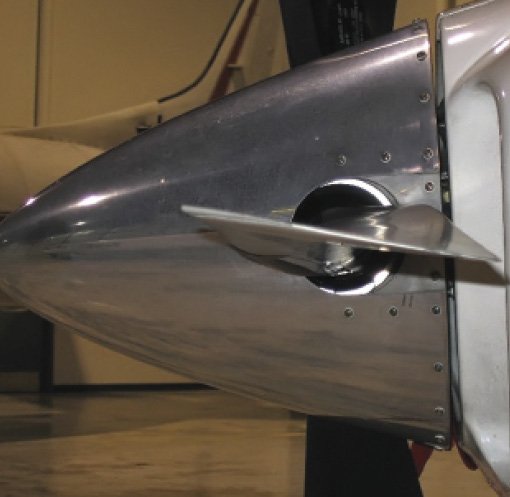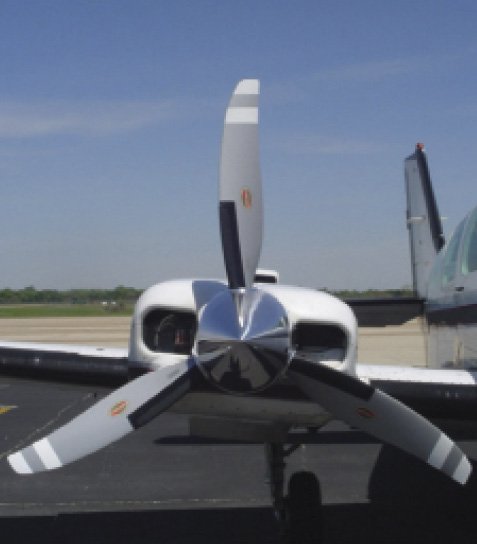A reader recently wrote to request an article on propellers: Why are “constant-speed” props called what they are, how can a fixed-pitch prop “lug” the engine and how does the number of propeller blades affect performance were some of the questions posed, and we promised to follow up. We’ll talk mainly about how to fly common propeller systems on piston-powered small airplanes.
Remember that propeller blades are airfoils moving in a plane different from and usually perpendicular to the direction of flight. As an airfoil, the amount of lift the blade creates when moving through the air depends on its angle of attack, and its angle of attack—plus drag—can depend on a variety of factors, including the airplane’s pitch attitude. Remember, too, that the outer portions of long prop blades move faster—they cover greater distance in the same amount of time—than shorter ones.

Fixed-Pitch/Ground-Adjust
The most basic and inexpensive propeller is a fixed-pitch version, possibly made from a single piece of alloyed aluminum. Other construction materials include laminated wood, probably with a metal leading edge, and composites, sometimes over a wood core and sometimes also with a metal leading edge. Regardless of the material used, a fixed-pitch prop is one whose blades cannot be pivoted in their hubs to change their angle of attack. What you see is what you get.
Fixed-pitch props can be manufactured to different blade angles, i.e., different pitches. Doing so can optimize a propeller for cruise flight—a coarser pitch that moves more air each rotation rather than one pitched to a shallower angle. Props pitched to a shallower angle can optimize takeoff and climb performance, at the expense of cruise speed for a given rpm. Props pitched for cruise allow higher airspeeds at the expense of takeoff and climb performance.
A variation on this theme is the ground-adjustable propeller. As its name implies, a qualified technician with the correct tools can change the blades’ angle of attack on the ground, allowing per-flight optimization for cruise or climb, but not both. Ground-adjustable propellers are popular on FAR Part 103 ultralights, homebuilts and some LSAs. You fly a ground-adjustable prop the same way you do a fixed-pitch prop, since there’s no airborne adjustment available.
A typical direct-drive airplane engine equipped with a fixed-pitch prop cannot achieve its full rated rpm—required for the engine to develop its rated power—even at full throttle while static or during takeoff. Once some airspeed is gained and/or level flight is attained, that same typical engine turning a fixed-pitch prop should be able to achieve near its rated rpm, and even exceed it in a dive. A fixed-pitch prop with a shallower blade angle—perhaps one configured as a climb prop—will allow the engine to turn faster at slow airspeeds, improving performance.

Constant-Speed Props
The takeoff-power limitations posed by fixed-pitch props led to engineers figuring out a way to pivot the blades in the propeller hub, thereby changing their angle of attack. The mechanisms to do so are beyond this article’s scope, but they can be electrically powered or use engine oil as hydraulic fluid. Some designs will have pre-set positions: high rpm, fine pitch for takeoff and low rpm, coarse pitch for cruise. These are usually known as variable-speed propellers.
The constant-speed propellers on typical personal airplanes allow infinite adjustment between their high-rpm and a low-rpm stops. However, instead of measuring the blade’s pitch angle, the pilot references the engine’s rpm to set propeller pitch. In turn, throttle position is measured with manifold pressure. (A pilot’s first introduction to a constant-speed prop often involves monitoring the tachometer while retarding the throttle and not understanding why rpm isn’t decreasing. For more on manifold pressure, see the sidebar at the top of the opposite page.)
The genius of the constant-speed prop is that it does exactly what its name implies: turns at a constant rpm set by the pilot, who really is adjusting the propeller governor. The typical prop governor is a bolt-on device used to increase the engine oil’s pressure and meter its flow into the propeller hub to hydraulically rotate the blades and change their angle of attack. A constant-speed prop will automatically change the propeller blades’ angle of attack—perhaps minutely—to maintain the desired rpm as, for example, the throttle setting is changed, the airplane’s angle of attack varies or it encounters a gust.
Constant-speed propellers are heavier and more expensive to acquire and maintain than fixed-pitch props. But as available power increases, it’s unusual to see a fixed-pitch prop on an engine of more than, say, 180 hp because of its inability to keep up with the constant-speed variety when it comes to performance and efficiency.

Feathering/Reversing
Once engineers figured out how to pivot the propeller blades in their hub, the logical next step was aligning them with the airplane’s slipstream—feathering—or going past the feather position to reverse the propeller’s thrust. A sidebar on the opposite page explores feathering and unfeathering systems.
Reversing is just what it sounds like: pivoting the blades in the hub past their feather position to push air ahead of the airplane, slowing it or even allowing it to move backward on the ground under its own power. Reversing thrust while airborne is a big no-no, and has resulted in crashes of both propeller-driven airplanes and jets. Few piston airplanes are equipped with reversible props, but they’re common on turboprops.
For the most part, props don’t need that much maintenance from year to year—dressing out nicks and touching up paint can be all the attention they need. But working on them generally requires special procedures and tooling your average mechanic doesn’t have, so it has to go to a shop that does.

Understanding Manifold Pressure
Manifold pressure, which we use to help set power when flying an airplane with a constant-speed prop, actually should be called manifold vacuum, because that’s really what’s being measured: how much air is being sucked into the engine’s cylinders.
When an engine is not running, its manifold pressure is the same as ambient pressure: 29.92 in. Hg at sea level on a standard day. Once the engine is running at idle, manifold pressure might be down around 10-12 in. Hg. At wide-open throttle at sea level, however, that same normally aspirated engine’s manifold pressure gauge should show close to ambient pressure, allowing for inefficiencies.
When we retard the throttle, we close a plate in the induction system, restricting the flow of air into the cylinders. This reduces power since there’s less air available for combustion, reflected by a lower manifold pressure reading. If we had an airplane engine turning a fixed-pitch propeller and equipped with both a tachometer and a manifold pressure gauge, each instrument’s values would fall when reducing power from full throttle.
Feathering/Unfeathering
“Feathering” refers to changing a propeller blade’s angle to minimize the drag produced, which is useful when the engine fails. They are rarely seen on a piston single but are almost universal in piston twins.
By pulling back the prop control on the typical piston twin after the engine has been shut down or fails, the prop enters the feather position, streamlining it and preventing it from windmilling in the slipstream, thereby reducing drag.
The details of propeller unfeathering systems vary from aircraft to aircraft, but each is designed to force the prop blades out of their feathered position so the engine can be restarted and used to produce thrust.




